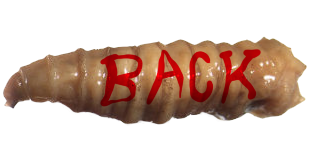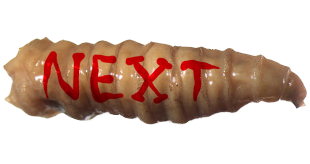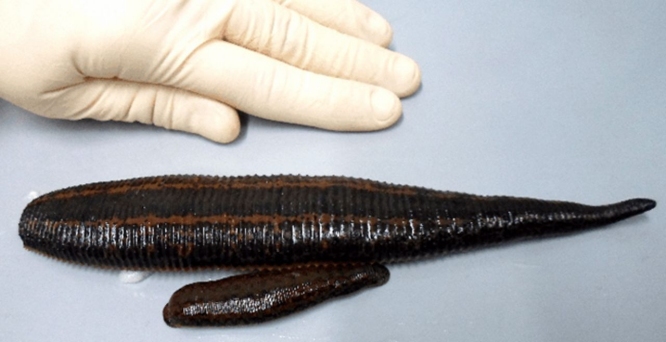WELCOME TO HALLOWEEN 2017:
HERE'S WHY LEECHES ARE SUPERIOR PETS.
I've spent most of my life loving these animals, but for whatever reason, I just never made the jump to their husbandry until recently, and I'm here now to tell you on this, the first official day of the Halloween season, exactly why ectoparasitic sanguivorous annelids are the pet craze of the future.
1) THEY CAN LIVE IN ALMOST ANYTHING
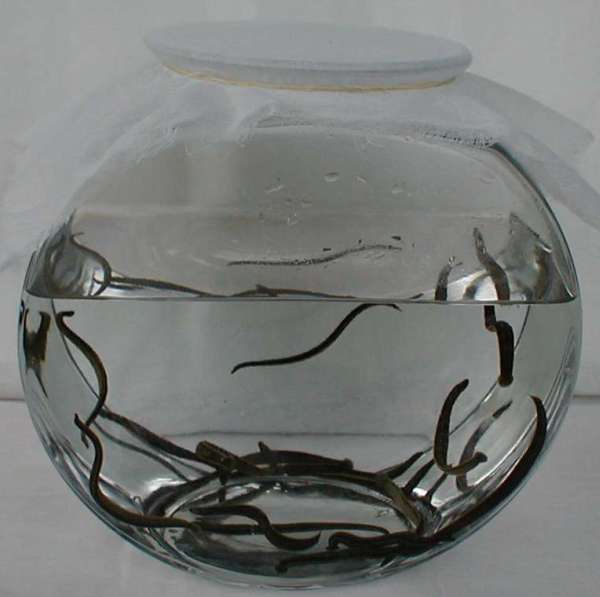
An aquatic pet living out its whole life in a cute, compact little glass bubble is a classic image, but in practice, fishbowls and miniature "betta tanks" are a cruel and unusual punishment for actual fish, cutting their lives tragically short in a miserable liquid tomb of their own filth.
Leeches, on the other hand, are quite content to live their lives in as little as half a gallon of water, and are only irritated or damaged by filter systems or other gizmos. The only caveat is their sensitivity to chemicals, but you can use store-bought spring water or just add a little dechlorinating conditioner (available at any pet store) to ordinary tap water.
To clean your leeches, just dump the old water out about every two weeks and replace it, taking care not to accidentally flush your pets down the drain with it or shock them with too severe a temperature difference.
You will want to keep them secure, of course, since leeches are thin, boneless, and fully capable of climbing around on land. Since they like a lot of air flow, you'll want some STURDY gauze or cheesecloth for your lid, preferably several layers, held on nice and tight with rubber bands.
2) THEY EAT JUST TWICE A YEAR.
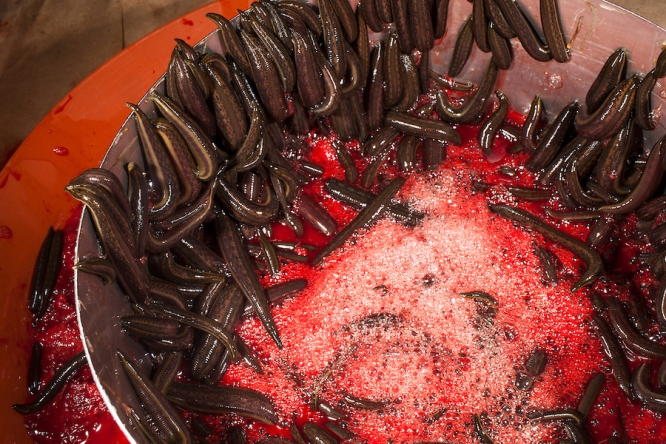
Tropical species like the giant "buffalo" leech are an exception and will thrive best on a weekly meal, but the common medicinal leeches and other blood-feeders don't get too hungry for even six or seven months at a time, consuming their fill and digesting it slowly. Buy pre-fed leeches, and you won't have to do anything but water changes to keep them happy for a whopping 24 weeks.
This sluggish energy consumption comes with the bonus of a fairly long lifespan; some leeches can live up to a decade or more!
3) THEY DON'T NEED YOUR BLOOD

Other parasites are pickier about this, but leeches are perfectly content to gorge on old, clotted blood long after its owner has passed on, as you may have just noticed. If you live in the United States, you might have some difficulty finding packaged animal blood, but I was able to find some pig's blood for sale in the meat departments at both a Japanese and a Vietnamese grocer.
Unfortunately, the Japanese offering contained an anti-coagulating chemical additive that may make leeches sick, but blood from the Vietnamese place listed only blood, water and ordinary salt as ingredients, which is perfectly acceptable. Place your container of blood in hot water until it's nice and warm, then just dump a few scoops of it into any sealed container with your leeches and a little water. They'll spend hours, even most of the day wallowing in it until they've had enough to last them another few months.
Packaged blood will be almost as thick as jell-O, so you can also cut it into chunks and put them in the freezer for next time!
3) ...BUT THEY CAN DRINK YOUR BLOOD.
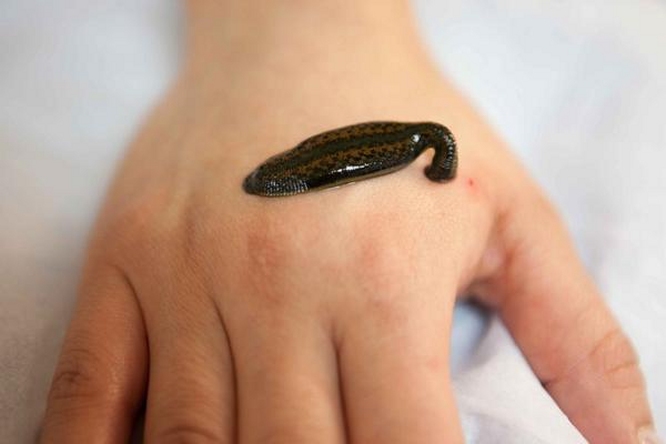
Can't find a good source for pig's blood? Don't mind bleeding? Enjoy the idea of having a pet you literally feed yourself? The bite of a leech can be almost painless, lasting just twenty minutes or so until it's had its fill and releases its suckers, a process I remind you needs repeating only once or twice a year.
There's even a lot of people who've found that leeches help to relieve their pain or stress. It's unlikely they're the magic medical bullet some breeders are pushing, but there may be many benefits to the natural blood thinners they inject into a host's body.
Just be careful. Though the bite of a leech is hardly larger than a pin prick, it will bleed profusely for hours, even days, due to those same anticoagulants. Disease transmission may also be possible if a leech has previously fed on someone with a blood borne illness, so buy at your own risk; I am not responsible for your safety!
As an aside, raising an animal on your very own blood, straight from your veins, is an easy way to completely one-up all those weaklings who feed live, terrified rats to their neglected snakes just so they can feel like scary badasses.
5) THEY LOOK GREAT
Just look at that beautiful swimming pattern! If some smart aleck asks what the "point" is in having a pet leech, just ask them what the point is in having a pet fish, something they probably wouldn't have questioned. Even when not swimming, leeches may be seen "walking" like an inchworm, rippling in place to aerate themselves, or exploring any safe objects and hiding spots you place in their container. They do admittedly just sort of lie down and "sleep" sometimes, but they've already well surpassed the list of things a guppy can do.
Every species has its own interesting color patterns, to boot; they're not just solid black or brown, but elaborately striped, checkered and speckled in direct light!
6) YOU CAN MAKE MORE IF YOU WANT
If you want more leeches and you don't want to spend money, you can take a few steps to encourage reproduction. If not, then you just don't have to do anything. After mating, a leech will eventually produce an egg-filled, spongy cocoon formed from its own slime, and will want to deposit the cocoon onto land. If they don't have an adequate nesting site, they may not even bother to mate in the first place, but you just might find yourself a grandparent if your leeches can leave the water and lay cocoons in slightly damp plant matter.
A perfect leech nursery is just a clump of moist sphagnum moss, held out of the water in its own smaller container.
7) SOME OF THEM ARE HUMONGOUS
Don't be afraid for the goldfish in this video; it's there for size comparison and isn't something the giant Hirudinaria manillensis is interested in as food. Also called the "Buffalo Leech," this tropical species actually needs an underwater heater to stay at least 75-80 degrees fahrenheit, and needs to feed on blood almost every week. Naturally this was the species I got first, and the babies in my video up at the top will reach this size - assuming proper health - by this time next year!
If that level of upkeep (or the price) isn't your cup of tea, even the more common medicinal leeches can get pretty hefty!
8) THEY'RE THE FINAL FRONTIER OF "SCARY" PETS
In recent years, I've been happy to see growing positivity towards arthropods and reptiles of almost every variety. Can we ever reach a point at which leeches are popular enough to be called "cute" in viral tumblr posts? At least a point at which they're popular enough to appear more than ever as cartoon characters and movie monsters? Not without your help!
...So where do you get them???
Unfortunately, this is where things get a little iffy. Currently, leeches.biz is the most dependable source, selling medicinal leeches for $8 each with $25 shipping fee to the U.S. and Canada. You can more easily find Leeches.com and its many other domain names, but reviews from within the small leech keeping community have been mixed to negative. Leeches from leeches.com sometimes do alright, but sometimes die mysteriously, and it seems likely that they're actually caught from the wild rather than farmed in clean conditions.
Leeches seem to be a steadily growing hobby, both among people who believe in their uncertain healing properties and people who find them just plain cool, with a great deal of crossover between the two categories.
Whether you just want something extremely low maintenance, a harmless pet that freaks everyone else out, or both, I really can't recommend leeches enough.
I also realize a pet caresheet is far from what you may have been expecting for the year's first Halloween post, but we'll be reviewing pumpkin decorations and freaky video game monsters soon enough, with plenty of surprises and a return of some old favorites!
MORE HALLOWEEN FEATURES:
